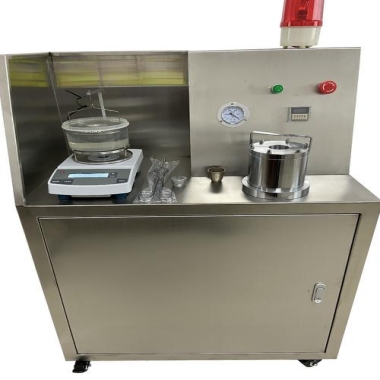
Aluminum Liquid Hydrogen Analyzer
Category:Hydrogen Analyzer
Introduction
The Hydrogen Meter is a specialized testing device independently designed and manufactured by our company for qualitative detection of hydrogen content in molten casting aluminum. Despite being an economical model, its simple operation and rapid testing capabilities make it the preferred choice for many experienced manufacturers.
Working Principle
Based on the reduced pressure solidification method, the test sample solidifies under vacuum conditions. During this process, hydrogen dissolved in the molten aluminum gradually precipitates, forming bubbles inside or on the surface of the sample. The hydrogen content is evaluated by:
Observing surface irregularities or the number of pores in cross-sectional slices
Checking for cauliflower-like surface appearance (indicating higher hydrogen content)
Determining suitability for casting based on gas porosity levels
Key Features:
Mobile Structure: Enables gas content testing at multiple fixed locations with a single device
Rapid Analysis: Completes aluminum melt analysis within 5 minutes under foundry conditions
Reliable Results: Combines multiple analytical methods for accurate quality assessment and production guidance
Durable Construction:
No consumable parts, low operating costs
Simple operation requiring minimal operator experience (basic training sufficient)
Corrosion-resistant design with minimal maintenance requirements
Robust Vacuum Chamber: Eliminates fragile glass dome components
Environmental Adaptability: Suitable for complex furnace-side environments
Sample Evaluation Methods
A. Surface Observation Method
Examine the top surface of the vacuum-cooled sample:
Cauliflower-like protrusions or significant bulging indicate high hydrogen content
Smooth/slightly concave surface suggests low gas content suitable for casting
B. Cross-Sectional Porosity Analysis
Slice the sample and observe pore distribution
Polish the cross-section, perform acid etching, and evaluate degassing effectiveness according to national pinhole grade standards
C. Aluminum Density Measurement
Weigh the cooled sample (W₁) in air using an electronic balance
Suspend the sample in water with known density and measure submerged weight (W₂)
Calculate hydrogen content using:
Relative Density Method: α = W₂/W₁ (Higher α indicates lower gas content)
Absolute Density Method: ρ = W₁·ρ_water/(W₁-W₂) (Higher sample density correlates with lower porosity)
Technical Parameter
| Parameter | Specification |
| Dimensions (L×W×H) mm | 600×500×1400 |
| Weight kg | 120 |
| Sample Weight g | 100 |
| Pumping Speed L/s | 2 |
| Vacuum Range (Adjustable) kPa | -100 to -1.3 |
| Ultimate Vacuum Time min | <4 seconds |
| Vacuum Pump Motor Power kW | 0.37 |
| Pinhole Grade | Number of Pinholes (per cm) | Pinhole Diameter (mm) | Percentage Distribution (%) |
|---|---|---|---|
| 1 | <5 | <0.1 | 90 |
| 1 | <5 | 0.1-0.2 | 10 |
| 2 | <10 | <0.1 | 80 |
| 2 | <10 | 0.1-0.2 | 20 |
| 3 | <15 | <0.3 | 80 |
| 3 | <15 | 0.3-0.5 | 20 |
| 4 | <20 | <0.5 | 70 |
| 4 | <20 | 0.5-1.0 | 30 |
| 5 | <25 | <0.5 | 60 |
| 5 | <25 | 0.5-1.0 | 30 |
| 5 | <25 | >1.0 | 10 |